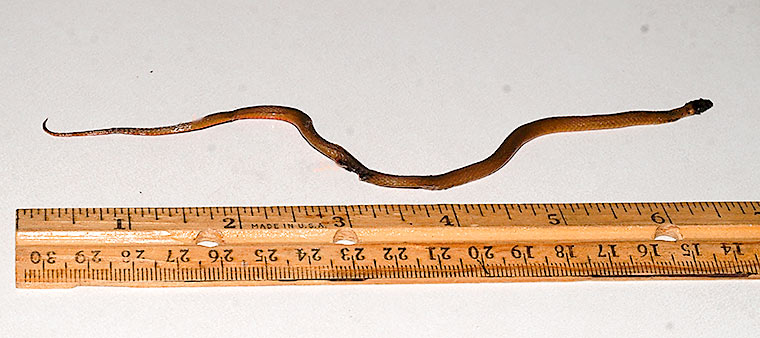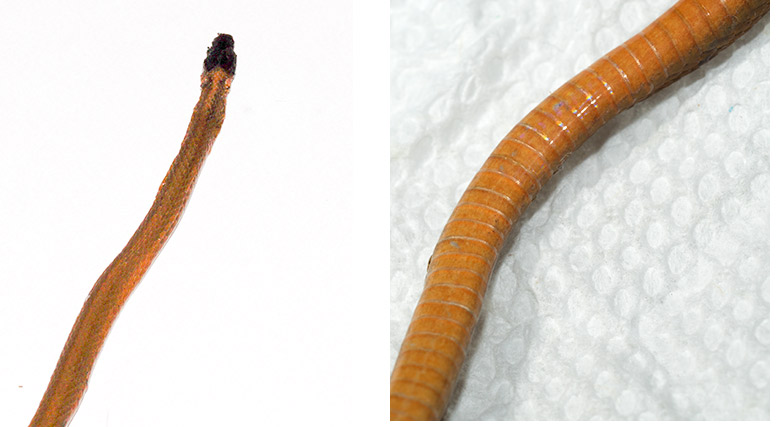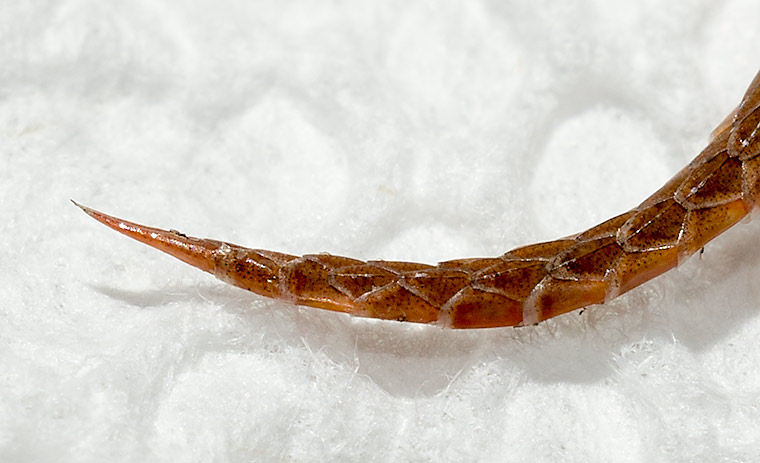We had quite a storm last week as the hurricane passed off shore. There was lots of wind and rain. So the following morning found our driveway through the woods covered with leaves and branches. After a day to allow things to dry out a bit, I fired up the leaf blower to clear off the driveway. I noticed this little creature sort of stuck to the pavement when the overlying leaves blew away.
Then I picked it up sort of absent-mindedly thinking it was a worm of some sort. Closer inspection revealed it was a very small snake, Unfortunately, it was quite dead and a bit mangled.
I knew it was one of two or three species of small snakes that inhabit our area. Closer inspection showed it had a black head, a brown back with some faint stripes, and a uniformly colored underside that was orange colored.
A close look at the end of its tail revealed a sharp point formed from the terminal scale. Close inspection of the dorsal scales revealed that each of them has a ridge down the middle.
I conclude this is a Red-bellied Snake (Storeria occipitomaculata), even though the sharp point on the tail is more characteristic of a Worm Snake (Carphophis amount). Maximum size for red-bellied snakes is about 12 inches. They are extremely variable in color.
Red-bellied Snakes are seldom seen on the surface, because they prefer to burrow in the leaf litter or loose soil or to hide under logs or stones. However, in Northern areas during Spring or Fall migration, large numbers may sometimes be seen in the open as they head to or from their communal dens. They are active all winter in the South. These small ssnakes eat mostly earthworms, slugs, snails, and insect larvae. Special characteristics of their jaws and teeth enable them to remove snails from their shells.



